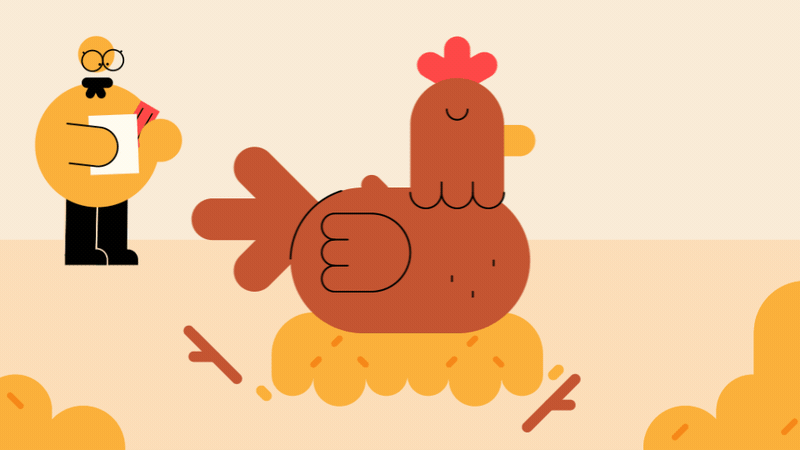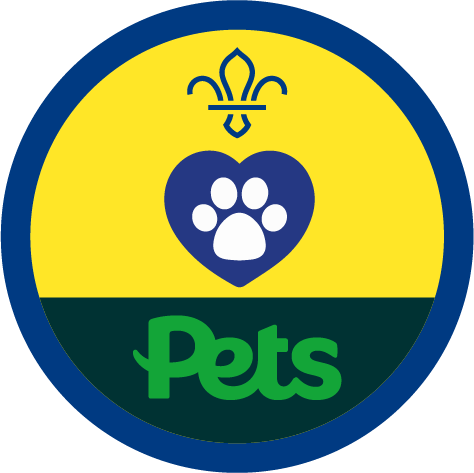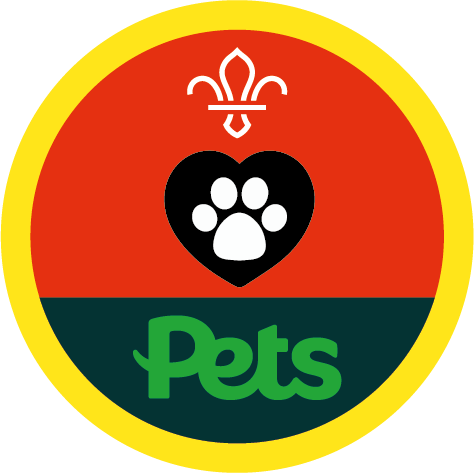
Animal diary
You’ll need
- Coloured pens or pencils

Before you begin
- The Animal Carer Activity Badge is often one people to choose to complete at home. This diary will help everyone remember what they did to achieve their badge, and help them to show other people what they’ve learned.
- It’s up to you (and the people completing the diaries) whether they want a printed version to write and draw on, or whether they’d prefer to fill it out digitally.
- If people don’t have a pet (or farm animal) they can care for, they can help look after a family member’s pet, wild animals like birds, or even an animal at a local farm or sanctuary.
- People don’t need to care for the animal daily, if it doesn’t need daily care and/or feeding.
Prepare to care
- The person leading the activity should show everyone the animal diary, and explain that it has space for some of the different ways they might care for an animal.
- Everyone should think about an example animal – how about wild birds in a garden? What would they need to do to look after the example animal, and what might they put in their animal diary? We’ve included some ideas to help below.
- The person leading the activity should explain that people should be ready to give everyone updates about the animals they’re caring for. This doesn’t always mean bringing in their animal diaries, but it might do if it helps people to remember or explain.
Here are some steps you might follow if you are caring for wild birds:
- Put fresh water out every day.
- Give them food like nuts, seeds, fat balls, and meal-worms.
- Make sure there’s a selection of feeders for different birds – some like to hang on a feeder and pick and nuts and seeds, but others prefer to stand on a tray and eat from a flat surface.
- Replace the food every week – rain can affect whatever’s left, meaning that the birds won’t want to eat it.
- Borrow a bird book from the library to help you identify the birds you see.
Reflection
This activity was a chance to be independent. What was the best thing of looking after an animal? Did you learn to do anything for yourself? Did you need more help to begin with at the end – did it get easier to do things for yourself with a bit of practice? Did you have to make any decisions to look after the animal? How did you make decisions?
To look after an animal, it was also important that you cared. How did your actions and choices affect the animal? What would’ve happened if you’d suddenly stopped looking after the animal? Did you have to think about what the animal needed as well as (or even before) you thought about what you wanted to do? When else do we have to think about what other things (or people) want or need, and the impact of our actions?
Safety
All activities must be safely managed. You must complete a thorough risk assessment and take appropriate steps to reduce risk. Use the safety checklist to help you plan and risk assess your activity. Always get approval for the activity, and have suitable supervision and an InTouch process.
- Animals and insects
Be aware of the risks before interacting with animals. Be aware of anyone with allergies, and make alternative arrangements for them.
Some people choose to buy crickets for everyone – crickets are widely available as livestock feed. Everyone should take home and care for their cricket; they can easily be kept alive by feeing them scraps such as carrot and potato peelings.
You don’t need to own a pet to do this activity – you can also look after animals in a garden, or at a local farm, pet sanctuary, or wildlife centre. If you want to help at a farm, sanctuary, or wildlife centre, you should always seek permission first.
All Scout activities should be inclusive and accessible.


